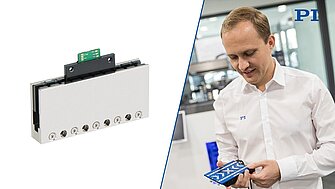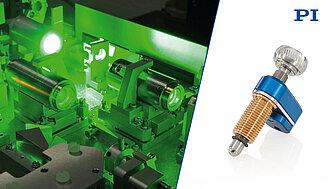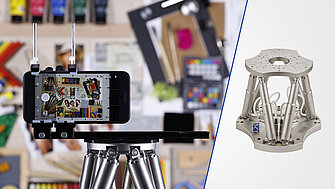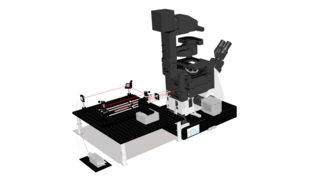For positioning and scanning systems equipped with magnetic direct drives, PI relies mainly on strong suppliers from the motor industry. With the Driven by PIMag® brand name PI is increasingly strengthening its expertise in motor design, construction, and manufacturing. Dietrich Wins, Product Marketing Manager for Motorized Positioners at PI, explains the motivation behind.
Learn moreCategories
Category: Video
PIMag®: Voice Coil, Linear, and Torque Motors Developed In-House
An Interview Gives Insight Why PI also Uses Its Own Motors to Offer Optimized Customer Solutions
Stable and Precise Positioning of Mechanical and Optomechanical Components
Piezo-Based Linear Actuators Provide Reliable and Automated Alignment of the Beam Path of Optical Assemblies
· Doris Knauer
How can the beam path of optical assemblies be adjusted with high resolution and stability? Piezo-based linear actuators provide reliable and automated alignment of mechanical and optomechanical components in experiments They offer a lifetime of more than a billion steps, a step size of 20 nm and a holding force of > 100 N.
Learn moreHow is the Still or Video Image Quality of Cameras Reliably Measured and Evaluated?
DXOMARK Uses a PI Hexapod to Simulate Camera Movements in Image Stabilization Testing
· Doris Knauer
Taking sharp pictures despite poor lighting conditions, taking snapshots without blurring, recognizing traffic signs in driver assistance systems, or identifying dangerous situations in surveillance systems - all of this is possible today with the help of modern cameras. But how good is the still and video image quality of a camera or smartphone?
Learn moreSetting up and Adjusting a Fluorescent Microscope for Reliable Examination Results
PI Supports the GATTAscope Project
Fluorescent microscopy does not only help to make nanometer-small structures visible, but also to examine living cells and therefore explore the cell processes. In addition to preparing the sample, it is of paramount importance to set up and adjust the microscope properly to get usable results. This is exactly what the GATTAscope project is all about.
Learn moreThe New Modern Visitor Center
· Birgit Schulze
Live experience of positioning solutions from PI (Physik Instrumente): PI has a new modern visitor center at its headquarters in Karlsruhe. In addition to expert advice on specific motion and positioning tasks, visitors also have the chance to take a look at the latest and main application fields.
Learn moreWhy Google Relies on Hexapods
· Doris Knauer
Google used a hexapod for testing the electronic video stabilization of a pixel smartphone. Using the six-axis parallel-kinematic system, Google simulates possible vibrations during video recordings, which are to be corrected reliably using algorithms. A view behind the scenes at Google.
Learn more



